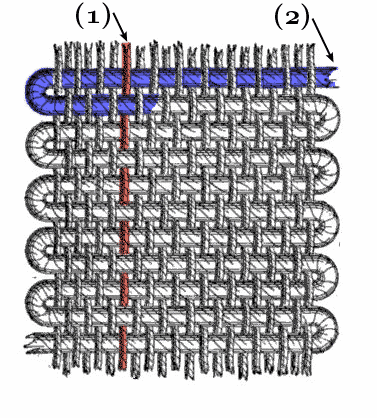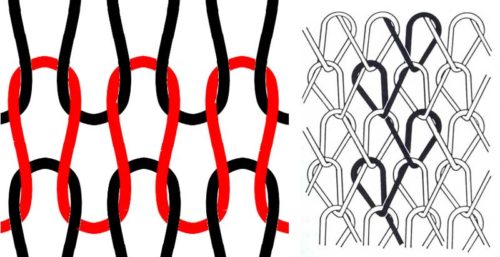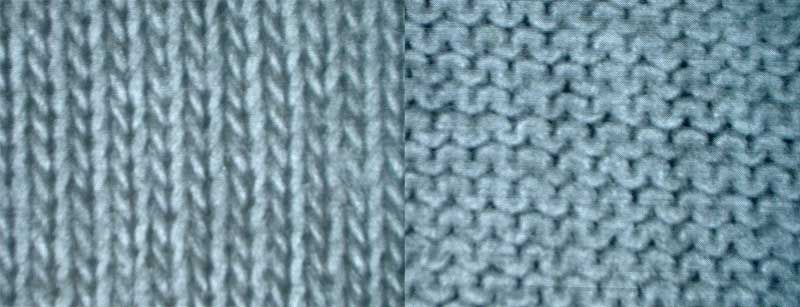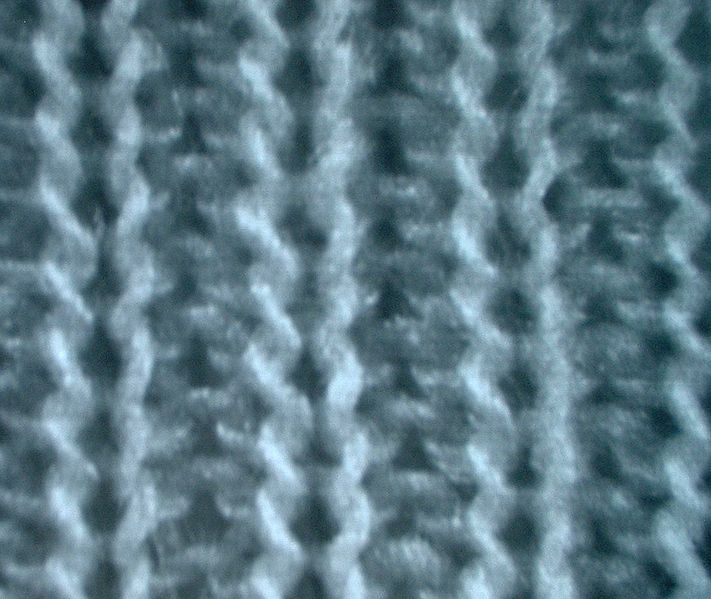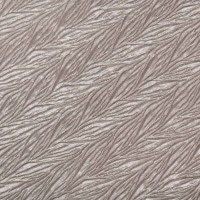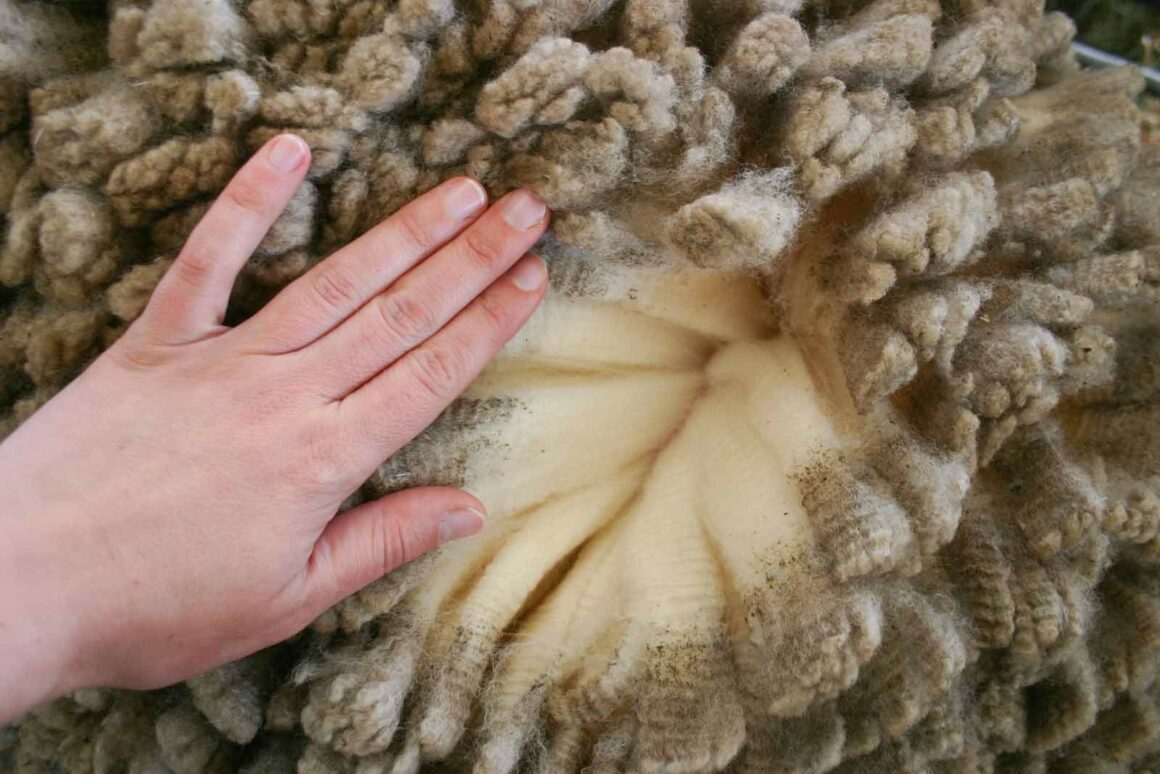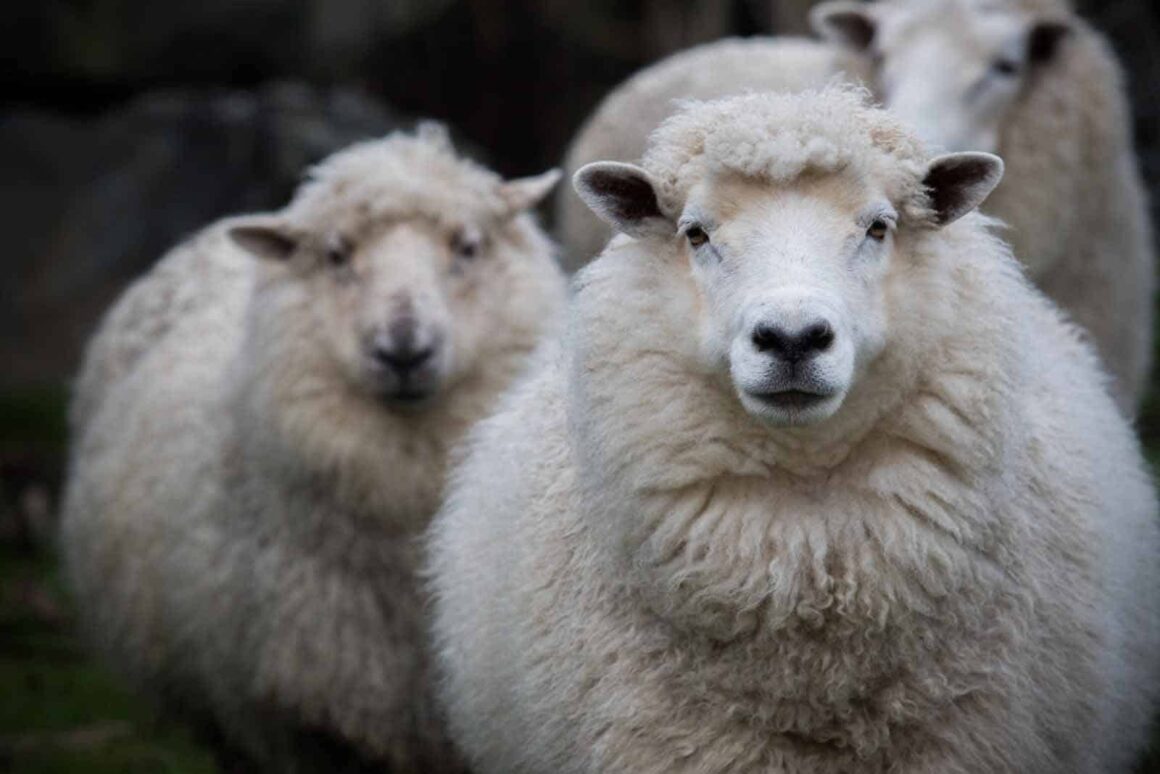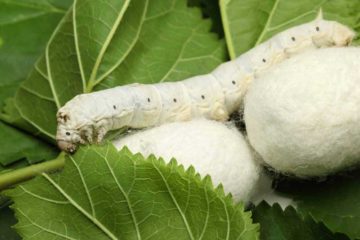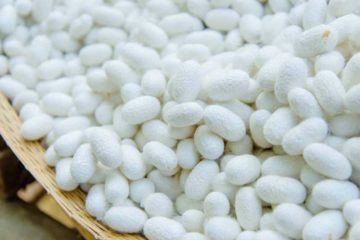Woven fabrics and knits
In the past, people have invented various textile materials. In this article, you will learn what types of fabrics exist and how to identify them. At the beginning, I would like to mention two basic categories - woven fabrics and knits.
Woven fabrics
Woven fabrics are produced in weaving mills on looms. The warp threads (1) are stretched on the weaving frame and the weft threads (2) are intertwined between them. You can probably imagine a simple frame loom on which the warp threads are stretched, and a weft thread is threaded between them, which creates a flat woven fabric. In industrial weaving mills, of course, looms are much more complex and the whole process is much more complicated, but the idea of a simple loom will work for us here. The number, size and arrangement of the warp and weft threads in the loom determine the weave of the fabric, i.e. the way in which the weft thread is interwoven between the warp threads. This thread arrangement is called type of weave (brocade, poplin, twill...). Woven fabrics are naturally inelastic.Woven fabric may become (to some extent) elastic if yarns containing elastic fibers (elastane) are used in the weaving process. More information about elasticity and elastic fibers can be found here:
How to test the elasticity of a material
Mechanical elasticity
By mechanical elasticity we mean the ability of the fabric to stretch a little even without added elastic fibers. It is not elasticity in the true sense of the word - the fabric stretches a little only because there are small tolerances in its weave. This elasticity manifests mainly when stretching woven fabrics in the diagonal direction - weft and warp threads slide along each other which results in a slight stretching of the fabric. For example, a twill weave has greater mechanical elasticity than a canvas weave. However, you wouldn’t say that the twill fabric is elastic. We can speak of true elasticity only in the case of knits or woven fabrics containing elastic fibers.
Knits
Knits are created on knitting machines. You can imagine knit as a plane of intertwined loops. Knits also has different weaves that define different types of knits (single knit, double knit, laid-in knit…). By their nature, knits are flexible, either in one or both directions. Knits are usually more flexible in width than in length. The loops that make up the knit can stretch, hence the primary (natural) elasticity. In addition, if the knit contains elastic fibers (elastane), it is even more elastic (secondary elasticity). Elastane also extends the life of the knit. When you stretch an elastane-free knit often, over time the loops lose their ability to retract to their original shape and the knit as a whole loses elasticity. Therefore, only use knits with added elastic fibers for clothes that are exposed to a higher level of stress (leggings, tight T-shirts...), otherwise the elbows and knees will start to “sag”.
Leather & Leatherette
A separate category is leather and imitation leather (leatherette), which you can imagine as a uniform formation without any weave, so for example, it does not matter in which direction you put the pattern piece on the sheet of leather or imitation leather. However, this only applies if the reverse side of the leatherette is not taped with woven fabric. If it is, the pattern layout is governed by the orientation of this fabric. If the leatherette is reinforced with non-woven fabric, you can lay the pattern pieces in any direction.
| Woven fabrics | Knitted fabrics |
| → Poplin | → Single knit |
| → Twill | → Double knita |
| → Brocade | → Laid-in knit (tracksuit fabric) |
| → Flannel | |
| → Damask | |
| → Satin | |
| → Denim | |
| → Corduroy | |
| → Gabardine | |
| → Terrycloth | |
| → Wellsoft | |
| → Jacquard |
Types of woven fabrics
Poplin
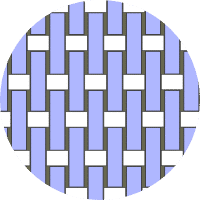
Poplin is a fabric, it can be made of natural materials, synthetic materials and combination of the two. Poplin is soft and flowing material, so it is suitable for skirts and shirts, for example. Poplin has these properties due to the fact that the ratio of warp threads (blue) to weft threads (white) is not 1:1. There are more warp threads in this material (the ratio is 2:1, sometimes 3:1).
Twill
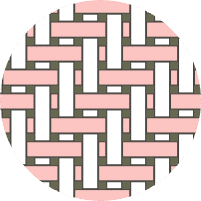
Twill is also a woven fabric. The weft threads are is intertwined with two warp threads “at once” according to the exact pattern, thus creating a typical twill weave, easily recognizable at first glance. Twill is heavier than poplin, and it’s often used for coats.
Brocade
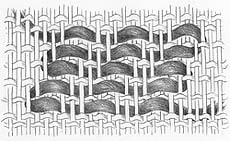
Brocade is a fabric with woven (not printed) decorative pattern (typically floral, oriental, etc.). The woven pattern is usually made of thicker thread and can be seen on the front and back side (the "negative" of the pattern is visible on the back side), but you can get monochromatic brocade too. It is used for coats, jackets and also as a decorative fabric.
Flannel
Flannel is a woven fabric of a classic canvas weave with combed face side. Combing produces typical “hairiness", thanks to which you can easily recognize flannel. This material was often used for sewing shirts, pajamas and bedding.
Damask
Damask is (usually) a monochrome jacquard fabric. It’s often used for luxury bedding and tablecloths.
Satin
All woven fabrics of an atlas / satin weave with a shiny face side are referred to as satin. They are usually woven from synthetic fibers or natural silk. Satin is used, for example, for formal wear or interior accessories.
Denim
Denim is a woven fabric of a twill weave with blue warp threads and white weft threads.
Corduroy
Corduroy is a woven fabric with additional weft threads. After weaving, the fabric is cut with rotary knives, creating the typical tuft ribbing.
Gabardine
Gabardine is a twill weave fabric with a warp to weft ratio of 2:1. Compared to the classic twill, it is more flowing and lighter. Gabardine is often used for coats and suits.
Terrycloth
Terrycloth is a three-dimensional fabric woven with many protruding loops of thread. Unlike regular woven fabric, such as ordinary canvas, terrycloth has a third dimension. In addition to the two basic dimensions (length and width), it also has some height - height of the loops on the warp threads. Loops can be above or below the base of the fabric or on both sides of the base. Due to its structure, terrycloth can absorb large amounts of water. Ordinary canvases have only a flat grid of fibers to absorb water. But terrycloth can absorb extra water thanks to its many loops. That’s why it’s frequently used for towels. Terrycloth is usually made of natural materials (cotton, bamboo...)
Bamboo fiber absorbs water better than cotton. If you have a towel made of bamboo fibers and a towel made of cotton (both with the same density and height of loops), then bamboo towel will absorb more water than the cotton one.
Wondering how to sew with terrycloth? Read my article on sewing terrycloth.
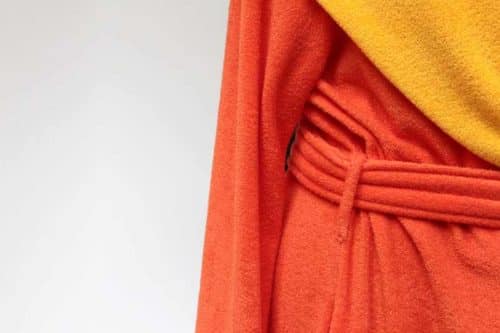
Wellsoft
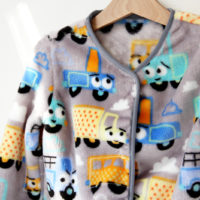
Wellsoft is an inelastic material which has hairs on both sides. It’s 100% polyester and it weighs 300-350 g/m2. It’s very warm and pleasant to the touch, great for winter clothes. If you often feel cold in fleece clothes, try wellsoft. I sewed this children's sweatshirt from Wellsoft.
Jacquard
Jacquard is a fabric with woven patterns (or plain) created using the jacquard technique. Jacquard patterning is a method of production of fabrics using a device that can control each individual warp thread (or knitting needle) independently of the others. This allows the loom to create large plastic patterns. It’s a weaving technique for creating large weave patterns by alternation of various weaves. You can read more about this method here: Wikipedia – Jacquard machine.
Types of knitted fabrics
Single knit
This material is smooth from the face side and its loops are visible from the reverse side. It’s very elastic.
Double knit
Both sides of this material are smooth, it is impossible to tell which side is which at first glance. Stronger and less elastic than single knit.
Laid-in knit (tracksuit fabric)
Is a single knit reinforced with non-knitted threads on the reverse side. It can be uncombed or combed.
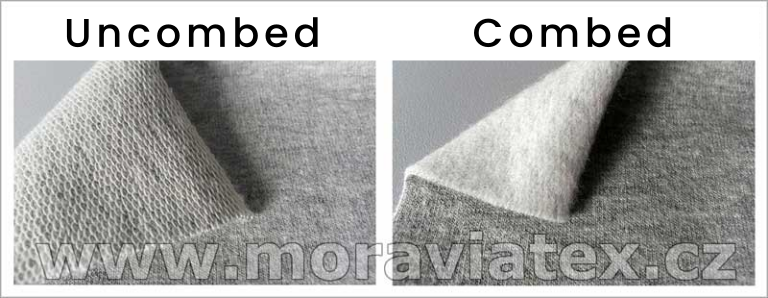
Textile materials - Natural & Synthetic
Choosing material for your project is crucial. I’m sure you wouldn't use silk for a flour bag, but sometimes you may not be sure what are the differences between some materials. I decided to compile a list of materials with short descriptions to help you (and me) always choose the right fabric for the job.
► Cotton
► Linen
► Hemp
► Bamboo
► Viscose
► Wool
► Mohair
► Merino wool
► Cashmere
► Alpaca fleece
► Silk
Cotton
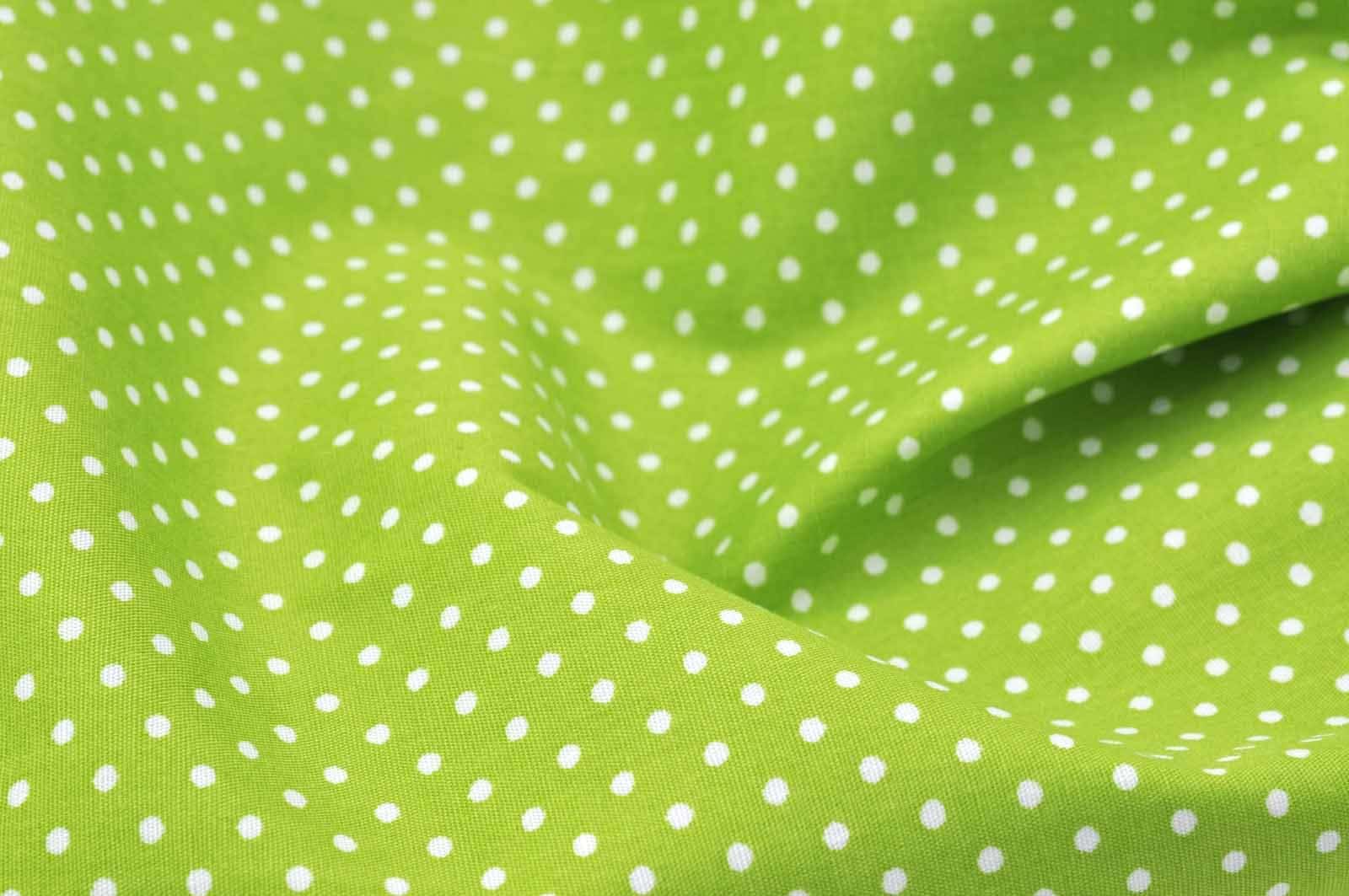
Cotton is a natural material that is obtained from protective cases formed around the seeds of the cotton plants - cotton bolls.
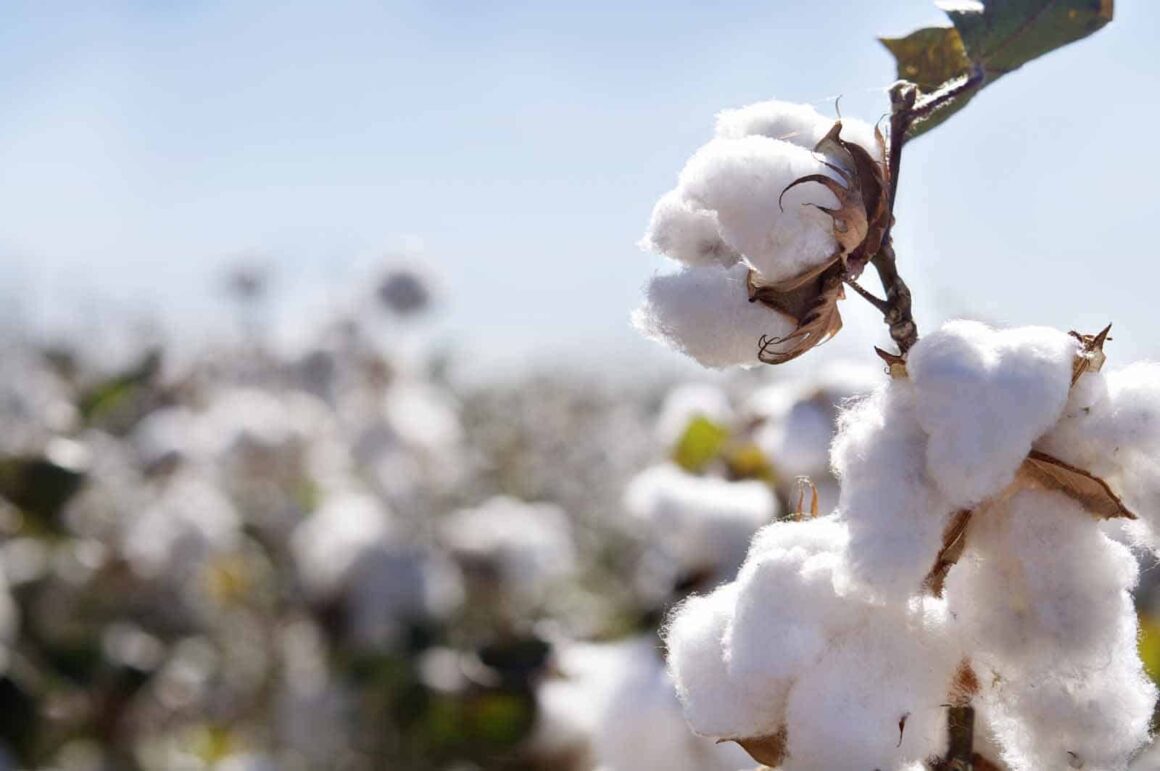
Cotton is relatively durable and therefore easy to maintain. Expect cotton clothing to shrink after the first wash. Cotton is breathable and absorbent, making it ideal for all kinds of clothes, but it’s not naturally elastic. If you want your cotton fabric to be elastic, you must choose from blends (mixes of cotton and elastic fibers). Cotton is suitable for children's clothing.
Linen
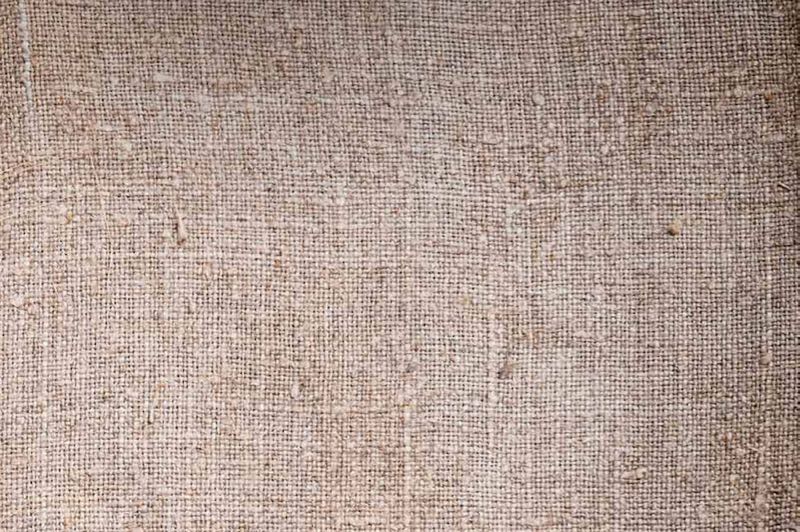
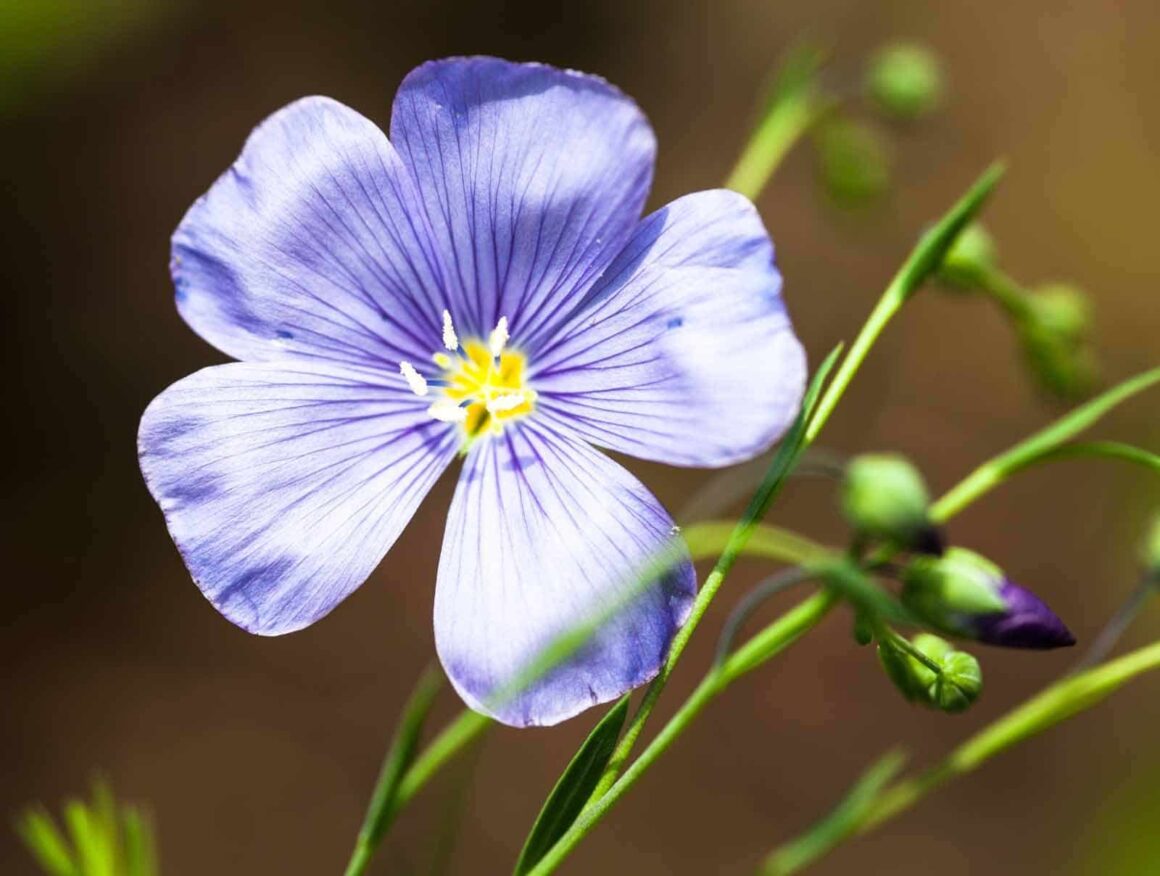
Linen fibers are obtained from the stalks of the flax plant.
Linen fabrics are stronger than cotton ones, they are not elastic, and they are great for summer clothes thanks to their “cooling touch”. Unfortunately, linen fabrics crease easily.
Hemp
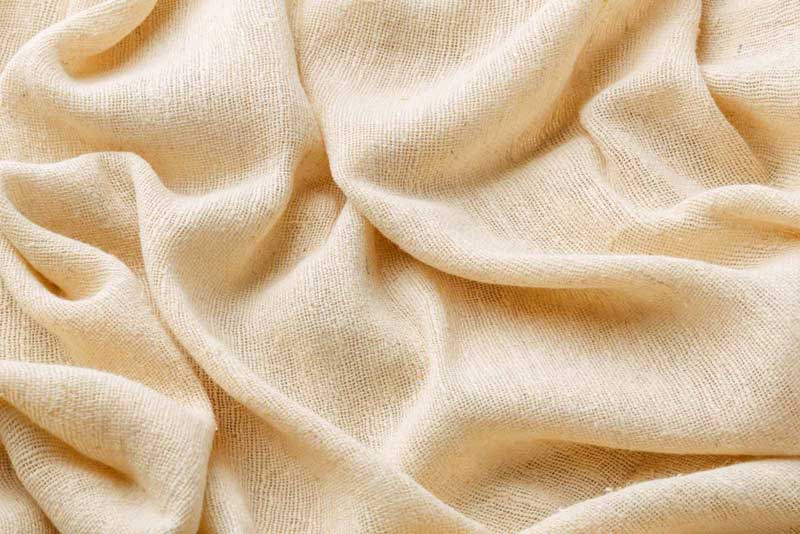
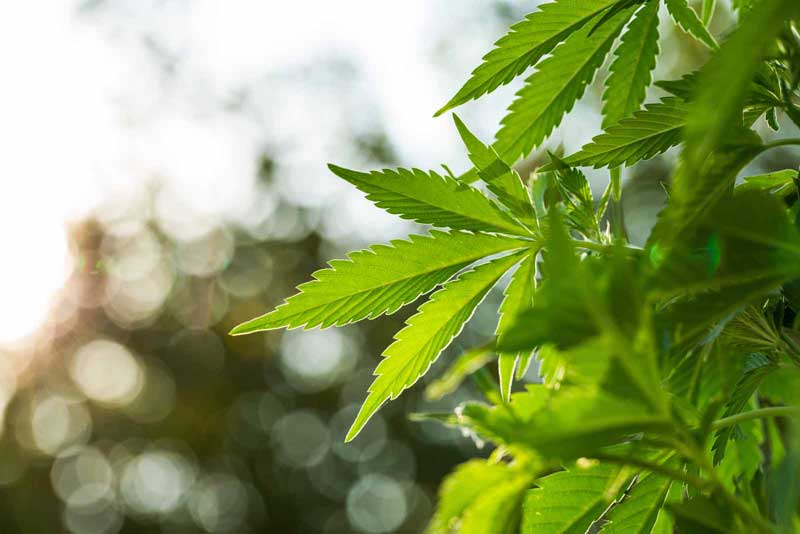
Hemp fibers are obtained from industrial hemp plants (a variety of the Cannabis sativa).
Hemp fabrics are stronger than linen. Hemp fibers are often mixed with cotton or linen fibers and used for technical products.
Bamboo
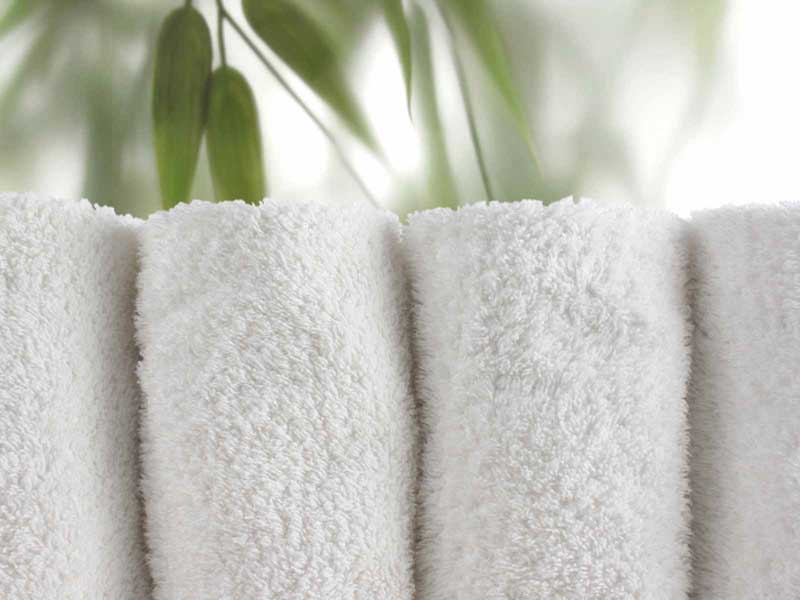
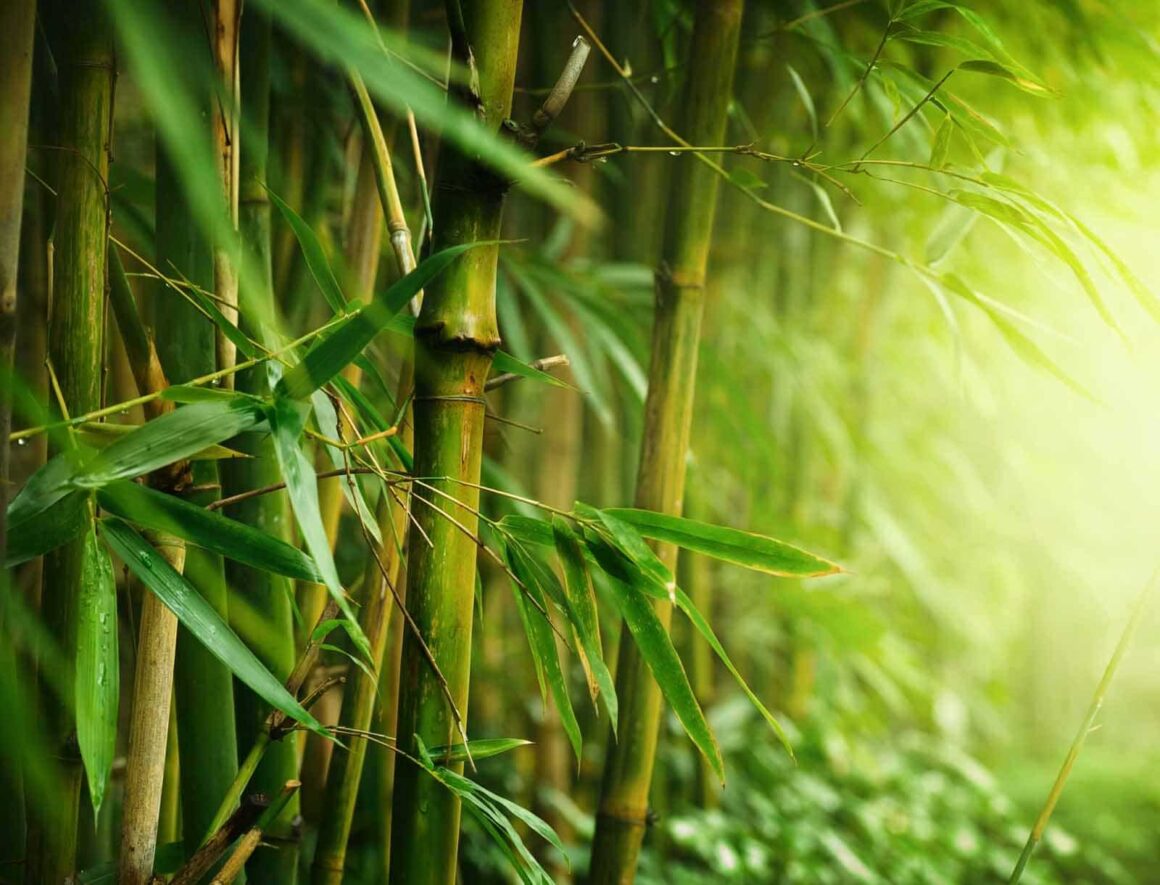
Bamboo fibers are obtained from bamboo plants.
It’s more pleasant to the touch than cotton. Bamboo can be found, for example, in towels, bedding and socks. Bamboo fibers are more absorbent than cotton fibers and reduce the multiplication of bacteria.
Viscose
Viscose fibers are made from cellulose and the cellulose can be found in wood (beech or oak wood for example). Viscose fibers are in many ways similar to cotton fibers. Viscose is also breathable and even a little more absorbent than cotton. Viscose shrinks more than cotton - this must be considered when washing viscose clothes for the first time. Viscose fibers are finer than cotton ones and therefore viscose fabrics are very light and pleasant to the touch, but they aren’t very hardy. At first glance, viscose fabrics are shinier, and they flow nicely. They are great for skirts and blouses.
Wool
Wool is a natural material, its fibers are obtained from the fur of some animals. (sheeps, goats, llamas etc.). You should take good care of wool products and strictly follow the manufacturer's recommendations so that the product retains its appearance and shape.
Mohair
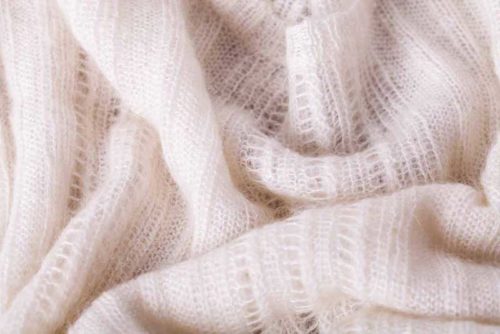
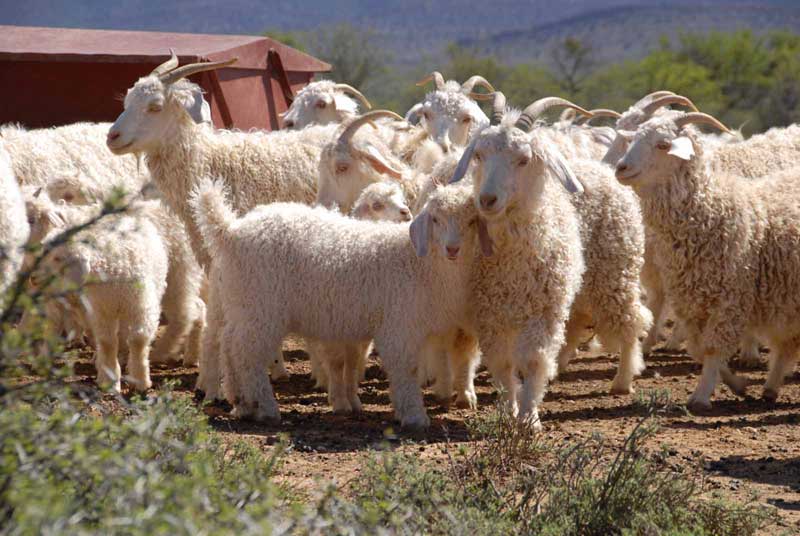
Mohair is a fabric or yarn made from the hair of the Angora goat.
This material has long fibers that can irritate more sensitive skin. Mohair is stronger and shinier than sheep wool. If you want to buy mohair wool, then I recommend getting it blended with sheep wool and processed into fine combed yarn.
Merino wool
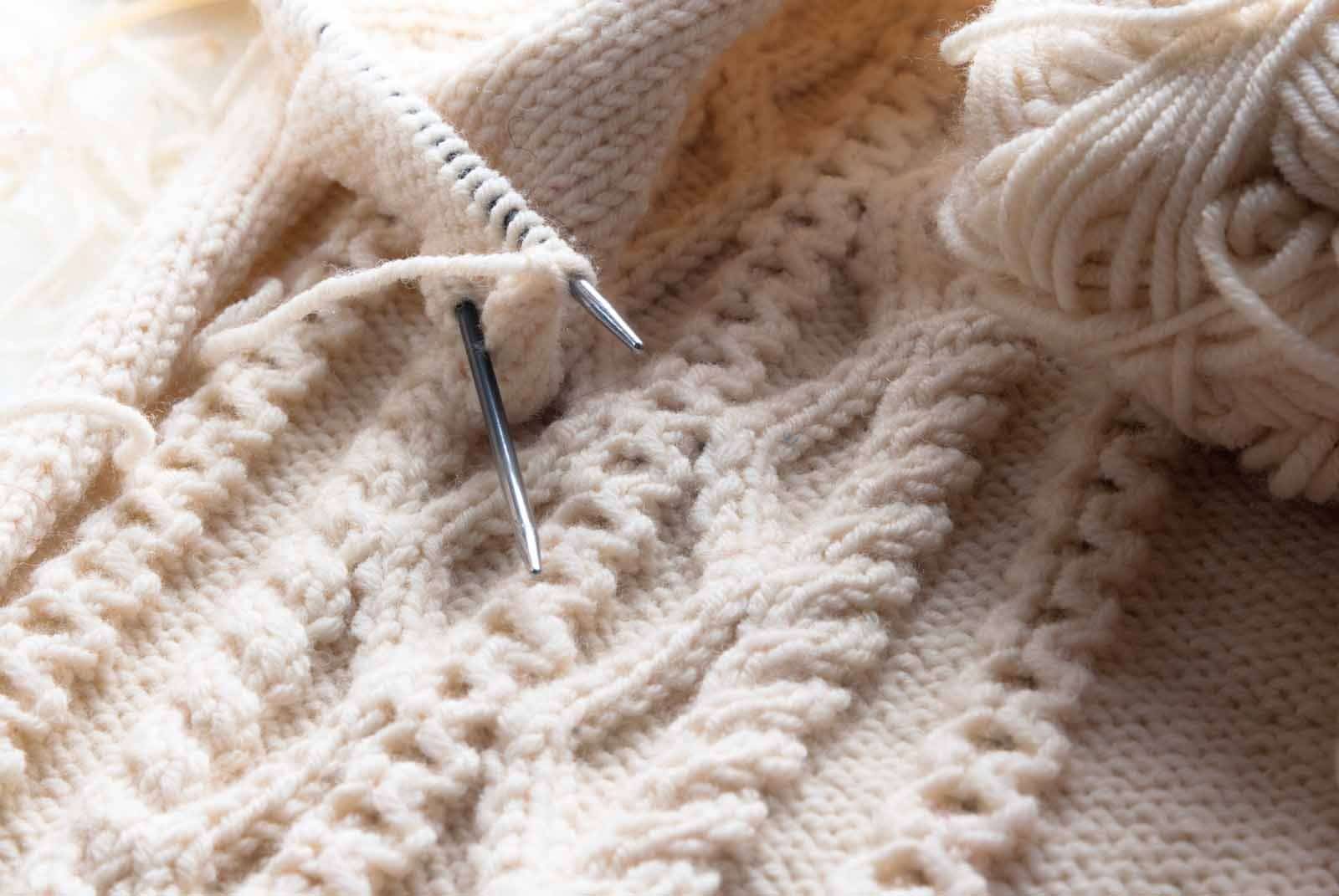
![]()
merino wool - detail ![]()
merino sheep
Merino wool is obtained from sheep specially bred and raised in humid and cold places.
Merino wool is very warm, and it can absorb a large amount of moisture, so merino fibers are widely used for sportswear and for children’s clothing. I like to use Maxi Color yarn from Vlnap for children's accessories. This material is 100% merino wool and it has a superwash finish, so I can wash the products in the washing machine and dry them in the dryer. You can also use Merino (monochromatic, pastel colors) or Monochromatic yarn - mixture of merino and modacrylic.
Cashmere
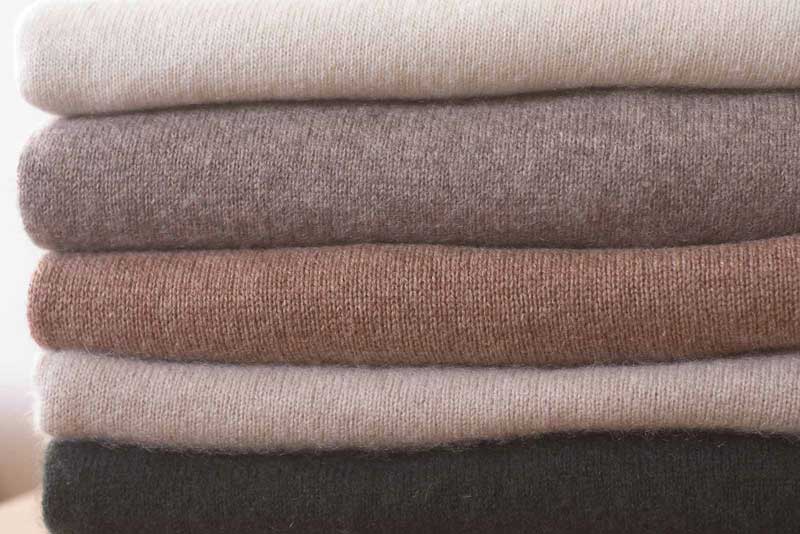
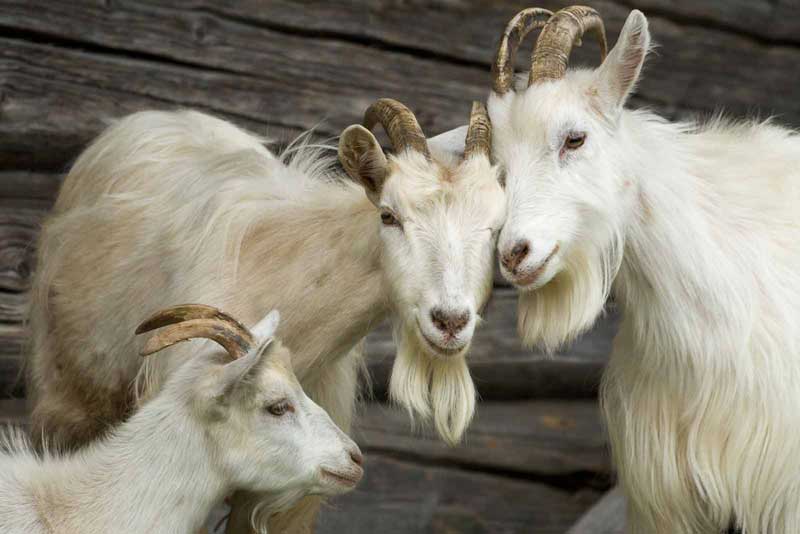
Cashmere fibers are obtained from the fur of a cashmere goat.
It’s fibers are shorter, very warm and pleasant to the touch. You have to take good care of cashmere wool products - this material tends to pill.
Alpaca fleece
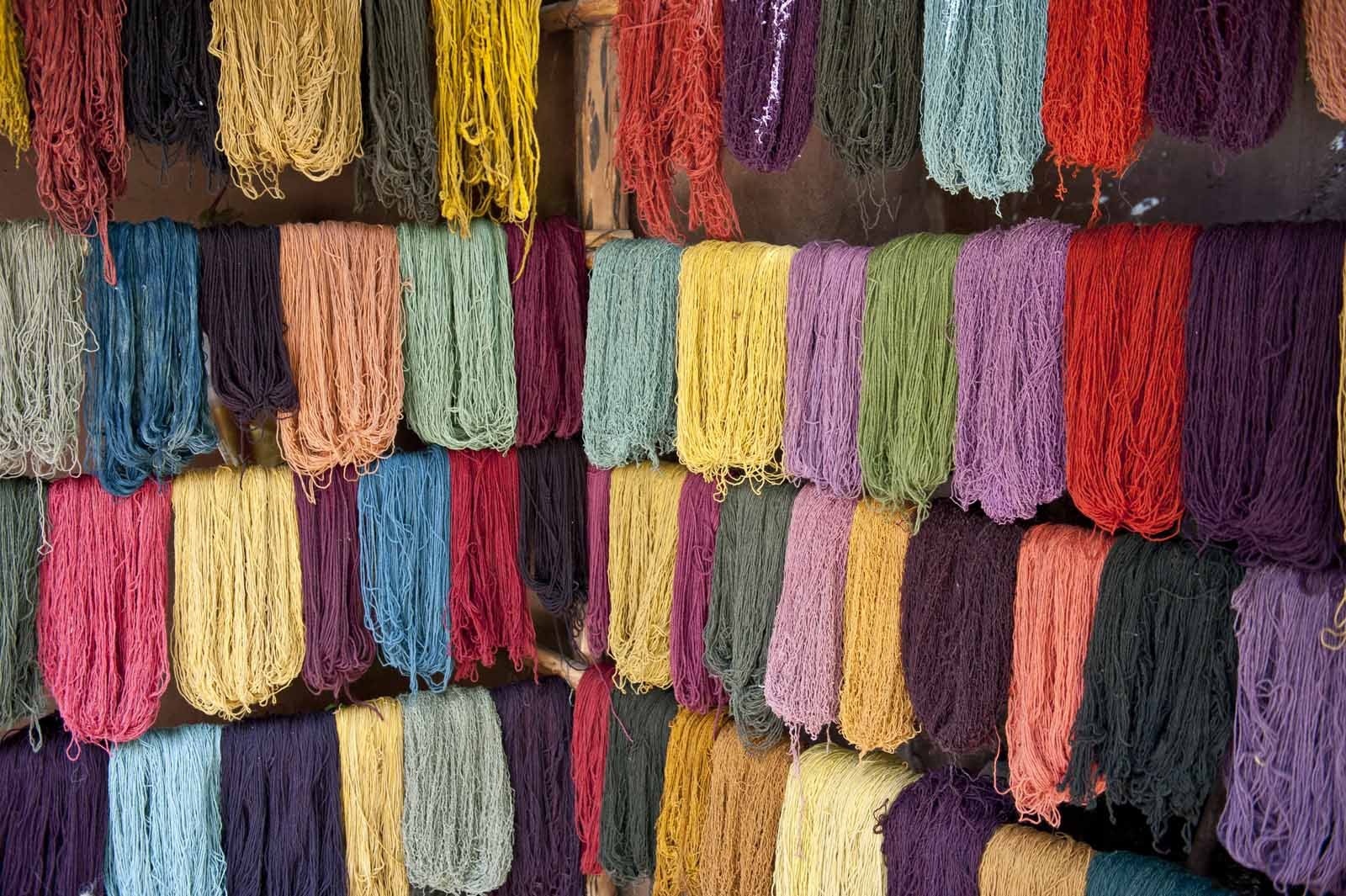
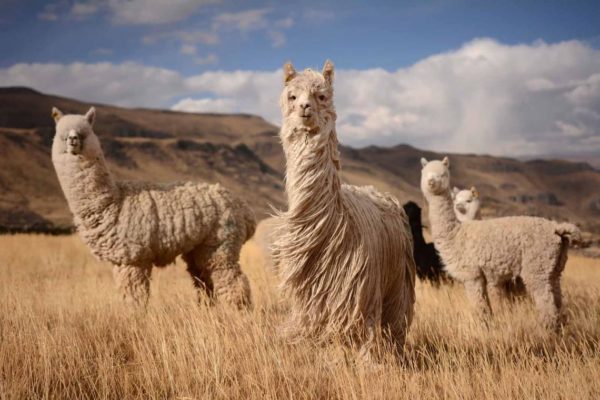
Alpaca fleece/wool is obtained from the fur of alpacas.
It is very warm, soft and slightly shiny. Products made of this material do not crease and last long. Products with a high proportion of alpaca fleece can irritate sensitive skin.
Silk
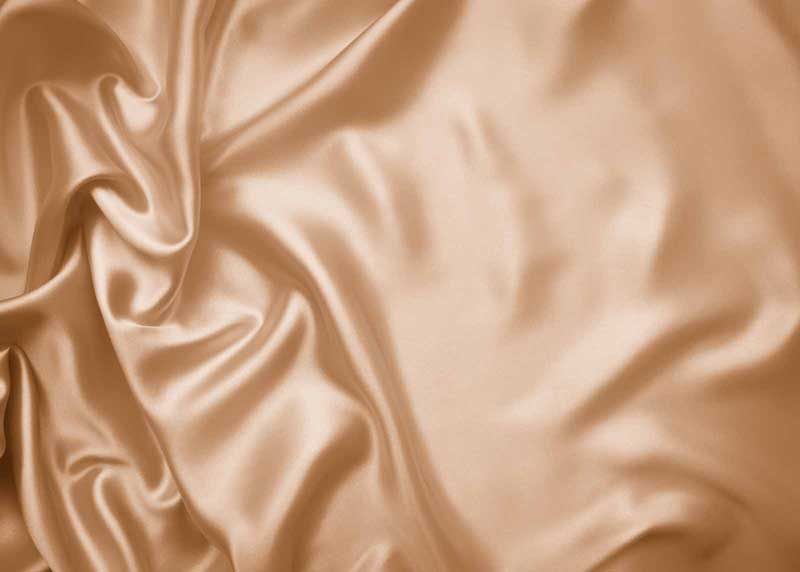
Silk fibers are obtained from silkworm cocoons. They are very long - sometimes called infinite or endless.
Several fibers of silkworm cocoons are spun together to form a silk fiber. Silk is very shiny and light. Silk has a nice insulating property, in summer the silk scarf cools you a little, in winter it warms you up. As with wool, you should follow the manufacturer's recommendations.
![]()
silkworm ![]()
silkworm cocoons





















